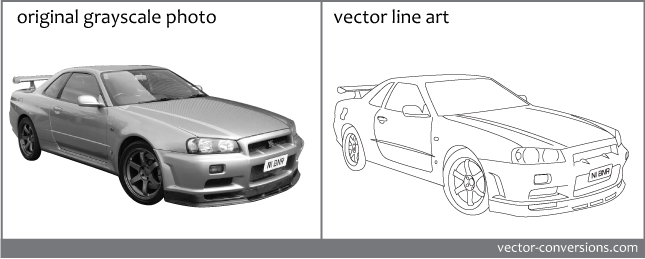


This is the main control for adjusting the look from this technique. On the bottom adjustment layer, change the "Hue" slider to apply any of the entire spectrum of color filters. It takes a little longer to setup than the channel mixer, but is actually faster to use once in place. This allows one to quickly assess which of the many combinations of color filters work best, without necessarily having one in mind when starting. This technique is particularly elegant because it allows you to apply any of the entire spectrum of color filters just by dragging the hue slider. If the aim is to mimic the luminosity perceived by the human eye, set: red=30%, green=59% and blue=11%. The sum of the red, green, and blue percentages need to equal 100% in order to maintain roughly constant brightness, although overall brightness can also be adjusted by using the "Constant" slider at the bottom. For an even more pronounced effect, some colors can even have negative percentages. Then adjust each of the red, green and blue sliders to produce an image to your liking. You can get a feel for the distribution of color by first setting each of the color channels to 100% individually. GIMP and many other image editing programs also offer this tool, however its menu location may vary.īe sure to first click on the lower left tick box entitled "Monochrome" for black and white conversion. Open this tool by clicking on Image > Adjustments > Channel Mixer in Adobe Photoshop. It is undoubtedly one of the most powerful black and white conversion methods, however it may take some time to master since there are many parameters which require simultaneous adjustment. The channel mixer tool allows the user to control how much each of the three color channels (red, green and blue) contribute to the final grayscale brightness. Each makes its own trade-offs between power and ease of use, and so you may find some techniques are best suited only to certain tasks.
#Online image converter to black and white full
Some techniques assume a combination for you, although the more powerful ones give you full control. Whether you specify it or not, all conversion techniques have to use some weighted combination of each color channel to produce a grayscale brightness. DIGITAL COLOR INTO BLACK & WHITEĬonverting a digital color photo into black and white utilizes the same principles as with color filters in film photography, except filters instead apply to each of the three RGB color channels in a digital image (see bit depth). Each image may therefore require its own combination of red, green and blue filtering in order to achieve the desired amount of contrast and tonal range. One can visualize other possibilities since all color filters would produce some superposition of the three images above (yellow would be half red, half green and zero blue). On the other hand, color filters can also make contrast appear greater than what we would perceive with our eyes, or can darken/brighten some regions excessively. Pure red or primarily red color filters often work best for landscapes, as this increases texture in regions containing water, sky and foliage. Notice the contrast changes both between and within regions of red, green and blue above. Move your mouse over the options below to view some of the possibilities.

To give the parrot similar contrast with the background in black and white, a color filter should be chosen which translates bright red into a tone which is significantly different from the middle gray background. Consider the example below, where the original color image makes the red parrot stand out against the near colorless background. Just as with color photography, black and white photography can use color to make a subject stand out - but only if the appropriate color filters have been chosen.

Careful selection of these filters allows the photographer to decide which colors will produce the brightest or darkest tones. These can block all but a primary color such as red, green or blue, or can partially block any weighted combination of the primary colors (such as orange or yellow). Filters are named after the hue of the color which they pass, not the color they block. Color filters are often used in front of the lens to selectively block some colors while passing others (similar to how color filters are used for each pixel in a digital camera's bayer array).


 0 kommentar(er)
0 kommentar(er)
